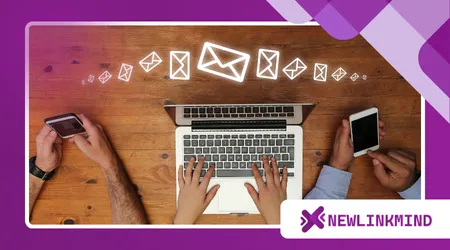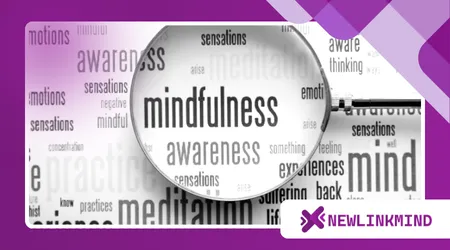Mindful Emailing: How Meditation Can Change the Way You Communicate

The challenge of Mindful Emailing is real in our hyper-connected professional lives. Is it possible to navigate the daily deluge of messages with calm and clarity?
Anúncios
A growing number of workplace professionals are finding that meditation techniques offer a powerful antidote to digital distraction and communication anxiety.
This transformation in digital interaction is more accessible than many realize. It requires shifting our approach from reactive response to intentional engagement.
The goal is not to eliminate email, but to elevate the quality of our interaction with it.
What is Mindful Emailing and Why is it Necessary Now?
Mindful Emailing is the practice of applying the core principles of mindfulness—presence, awareness, and non-judgment—to the process of writing, sending, and receiving electronic mail.
Anúncios
This conscious approach counteracts the impulse to rush and react.
We often check our inboxes compulsively, a habit that fractures attention and increases stress.
This fragmented state leads directly to hurried, unclear, or emotionally charged emails, damaging professional relationships.
Anúncios
The current business climate demands precision and emotional intelligence in every exchange.
A rushed email can cost time, money, and trust, making this skill an essential component of modern professional development.
How Does Workplace Meditation Improve Email Communication?
Meditation trains the mind to focus and observe without immediate reaction. This skill translates directly to better email hygiene and clearer messaging. It creates a necessary pause between receiving a message and crafting a reply.
Before hitting ‘send,’ the practitioner takes a moment to check for tone and clarity.
This small act of deliberate reflection significantly reduces the chance of miscommunication or regret, which are common email pitfalls.
Read more: Mindfulness Techniques for High-Stress Jobs
It’s about bringing awareness to our internal state as we engage with the digital world.
A calm mind naturally produces more coherent and respectful communication, which is always well-received.

What are the Key Practices for Mindful Emailing?
Implementing this practice involves several concrete steps that integrate easily into the workday. These are not grand gestures, but subtle shifts in routine that yield powerful long-term results.
One essential practice is batching: only checking and responding to emails at predetermined times.
This prevents the inbox from dictating the structure and flow of the entire workday, preserving focus for deep work.
See how interesting: Why Meditation Should Be a Daily Habit at Work
Another powerful technique involves the ‘Three Breath Rule’ before responding to anything perceived as urgent or difficult.
This physical pause re-engages the prefrontal cortex, promoting rational thought over immediate, emotional reaction.
Consider the composition phase: writing emails with the recipient’s emotional state in mind.
This empathy-driven approach ensures the message is both effective and supportive, strengthening rapport instead of eroding it.
| Mindless Email Habit | Mindful Email Practice |
| Checking inbox every few minutes | Batching email checks (e.g., 3 times daily) |
| Reacting immediately to perceived negativity | Applying the ‘Three Breath Rule’ before replying |
| Writing long, unstructured messages | Using clear subject lines and concise, direct paragraphs |
| Sending emails late at night or during personal time | Setting clear boundaries for ‘Email Office Hours’ |
Why Does Poor Email Communication Cost Companies?
The hidden costs of email inefficiency are staggering, extending far beyond wasted time.
Unclear or careless messages lead to extensive thread chains, requiring multiple exchanges to clarify initial points, a massive productivity drain.
Moreover, negative or aggressive email exchanges can severely damage team morale and client relationships.
Check this out: Gentle Yoga for Seniors Recovering from Illness
These digital scars are often harder to mend than face-to-face conflicts, which is a major concern.
Consider the average knowledge worker who spends a large portion of their day on email-related tasks; any improvement in efficiency offers a significant return on investment for the organization.
For example, a study by McKinsey Global Institute found that the average employee spends 28% of their work week on email.
Improving efficiency by just a few percentage points generates substantial reclaimed time.
The alternative is what often feels like a digital shouting match, or an endless game of clarification tag.
Mindful communication, including Mindful Emailing, stops this cycle before it even begins, fostering a culture of clarity.
Can a Simple Pause Truly Transform Professional Communication? Mindful Emailing
Think of the email system as a digital highway. Most people are driving fast, aggressively tailgating, and reacting to every flash of brake light.
They are driven by urgency, leading to accidents (miscommunications) and stress.
Mindful Emailing is like pulling into the scenic rest stop for just a moment to observe the traffic before merging back in.
This brief, intentional pause allows the driver (you) to choose the right lane, the right speed, and the correct destination.
This analogy underscores the power of intentionality over impulse. The slight delay in response time is more than compensated for by the clarity, quality, and effectiveness of the final message.
For instance, imagine a manager who receives an angry client email. Mindful Emailing dictates they first stand up and walk around the office before drafting a reply.
They return, composed, and write: “Thank you for sharing your concerns. I understand your frustration, and I assure you we are prioritizing a resolution.
Here is our proposed action plan…” This is the antithesis of a defensive, rushed response.
In another scenario, consider a team member constantly sending vague requests.
After adopting Mindful Emailing, they begin using a simple structure: Context, Request, Desired Outcome.
This one change reduces follow-up questions by 50%. The practice truly elevates the professional discourse.
Isn’t it time we stopped letting our inboxes dictate our peace of mind and professional efficacy? The power to communicate with intent and clarity is within reach.

The Future of Communication is Mindful
The integration of meditation into professional life is not a trend; it’s a foundational skill for the modern workplace.
Mindful Emailing represents the practical application of this discipline to one of our most frequent tasks.
By embracing intentionality, we move beyond simply managing our inboxes to mastering our communication.
This change benefits not only our professional outcomes but also our personal well-being.
The shift is profound: from treating the inbox as an enemy to be conquered, to viewing it as a space for mindful, deliberate, and effective communication.
Embrace the pause, master the message, and change the way you connect.
Frequently Asked Questions
Is Mindful Emailing the same as delayed responses?
A: No. While it often involves intentional delays (like batching), the core concept is about quality over speed.
It ensures that when you do respond, your message is clear, complete, and effective, often preventing the need for multiple follow-up emails later.
How can I start incorporating Mindful Emailing into my routine today?
Start small: Commit to checking your email only three times a day—morning, noon, and late afternoon. Also, for any email that makes you feel frustrated, step away for five minutes before even typing the first word.
Does this practice apply to instant messaging platforms like Slack or Teams?
Absolutely. The principles of pausing, choosing clear language, and considering the recipient’s emotional state are universally applicable to all forms of digital professional communication.
Will being mindful make my emails too long or overly formal?
Quite the opposite. Mindfulness emphasizes clarity and conciseness.
A clear mind often produces shorter, more direct, and better-structured communication because you get to the point without unnecessary emotional tangents or rambling explanations.
